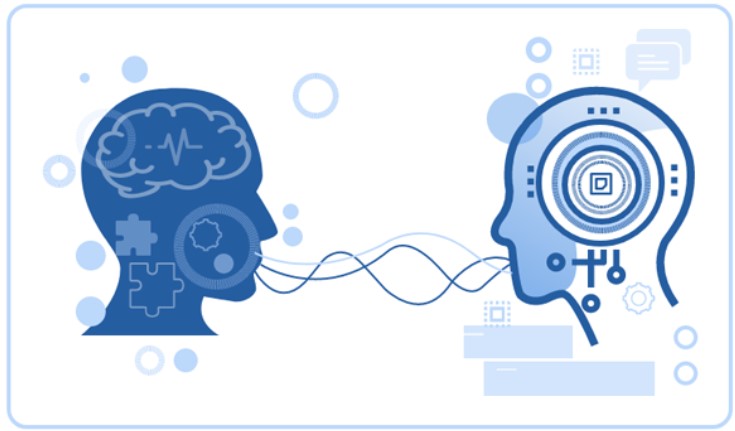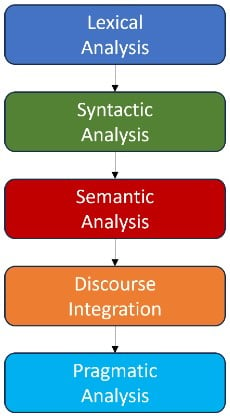Introduction
Artificial Intelligence (AI) has advanced so much that it has become hard to distinguish a true image from an artificially generated one. The era of the so-called ‘photoshopped’ images is almost past us, since AI has made great advances. These capabilities, whether used for good or bad, are truly marvellous. However, are generated images the limit? If you think the answer to this question is ‘yes’, you couldn’t be more wrong.

What’s All the Fuss About?
You sure had to call a specific company or service at some point in your life, and an automated message was played, prompting you to state what you want. After doing that, somehow, the system could understand what your intentions were and pass the line to the appropriate department. However, how is that possible? Is it some kind of sorcery?! Of course not. Something like that is achieved with the fascinating Natural Language Processing (NLP) and Natural Language Understanding (NLU) algorithms.
NLP models are components of Machine Learning (ML) algorithms, specifically AI, and they follow five discrete steps: Lexical analysis, syntactic analysis, semantic analysis, discourse integration, and pragmatic analysis. Generally speaking, the algorithm starts by breaking down the sentences that it is fed into words that are simpler for it to handle, a stage called lexical analysis. For example, the word ‘unimaginable’ can be broken down into the prefix ‘un-’, which gives a negative meaning, the word ‘imagine’, which is the root of the word, and the suffix ‘-able’, which transforms it into an adjective. This happens for every word that the algorithm ‘reads’. The next step is the analysis of the sentences syntactically to verify that they actually have a meaning. Then, during the semantic analysis, the model tries to understand whether the sentence has literal or figurative meaning and tries to match it with something simpler in its database that makes sense. This is when you are usually asked, ‘Is this what you mean?’ while chatting with a machine during a phone call. Now, if more than one person is involved, we go to the next stage, which is discourse integration, where the model tries to categorise who is speaking based on the context. Last but definitely not least comes pragmatic analysis, where the entire meaning of the sentence is decrypted (The 5 Steps in Natural Language Processing (NLP)).

So, How Does This Work?
If you think about it, this doesn’t differ at all from what we, humans, are doing. We are just so well trained in communicating that we understand the meanings of words and phrases instantaneously. If you want to be in the shoes of NLPs, try to remember the last time you started learning a new language! Therefore, it is no wonder that companies no longer use recorded messages. Well, they do, but things make much more sense now, right? This technology, as you understand, is not limited to phone calls, but it can also be applied to live chatbots as well. Of course, humans cannot be replaced, at least not just yet, but intelligent chatbots can surely aid in the categorisation of problems technical support can solve. This not only saves you time as a customer but can also save a company time and, therefore, money.
Search Your Feelings
The best thing is that that’s just the tip of the iceberg. Text classification and categorisation are cool and all, but we think that you would agree that it lacks the wow factor. However, what would happen if, based on the conversation, a chatbot could draw conclusions? You have noticed that the way you communicate can change according to your feelings. The tone of your voice, the speed at which you speak or type, the punctuation points, or even the number of uppercase letters you use and the number of mistakes you make! In fact, a study conducted in Switzerland among 90 people concluded that stressed workers move their mouses differently and less accurately than more relaxed colleagues. The same study also showed that employees who were stressed made more mistakes when typing (Leatham, 2023).
Such information may at first seem useless; however, an NLU model can extract useful features and draw conclusions about the sentimental state of clients. Based on that, a chatbot can alter the way it responds to ease the customer, even direct the conversation in a way that is in the company’s best interest, but that would also leave the client satisfied.

How May I Assist You?
Taking things one step further, you know how companies use cookies to ‘monitor’ how you interact with websites, right? Cookies are responsible for relevant ads to things you have typed in your search engine in your social media feed (no, we are not being spied on). The same principle could be used if chatbots are NLP-powered. Let’s say you visit a company’s website to check out their products. Based on your previous searches and clicks, chatbots can make smart suggestions on what potential clients should buy from them. The same can be done using text scraping, of course, by analysing searches on the Web (web scraping) or within the website itself from companies.
Such a tactic could potentially be helpful for customers as well, as it has been shown that even though a stunning 95% of people shopping in-store want to be left alone (Turner), more than a third of people need assistance when shopping online (83% of online shoppers need support to complete a purchase: stats). Based on mouse pointer behaviour, clicks, and time spent on each page, an AI algorithm implemented in the website could pop up a chatbot at just the right time, which could make the shopping procedure much simpler and more pleasant by making targeted suggestions to clients and eliminating some of their options based on the conversation with them. And since we live in the era of Extender Reality (XR), be it Augmented (AR) or Virtual (VR), if you want to make the whole experience more humane, give your website’s chatbot a fresh look by introducing facial characteristics or even a specific voice.
Computer Vision (CV) is a powerful tool that can analyse facial characteristics and expressions with unimaginable accuracy. Mix everything, and the perfect AI chatbot is ready!
The power of Generative AI is such that in the future we are sure that you will not be able to distinguish between a human and a bot interlocutor (in an ethical way).
Read more: What are some applications of NLP in Computer Vision?
Attract More People!
Of course, every serious business, regardless of how large or small it is, understands the power of social networks. Often, it takes entire digital marketing teams for a business to be on top, and consistency is the key to that. But what to post? How do we keep the audience engaged? NLPs can be of great value in that, too, with the AI-powered chatbots we mentioned above. The fact that someone engages in a conversation with a chatbot doesn’t mean that they will buy something anyway. So, by using cookies and some web scraping, it’s not that difficult for a company to show relevant ads to potential clients. Something like a ‘friendly reminder’ that, at some point, they were this close to getting their hands on something they were gazing.
Summing Up
AI algorithms such as NLPs and NLUs can be some of the most powerful allies in customer service. They can truly transform the way a customer or visitor interacts with a company, both physically and digitally. Chatbots have come to a point where it is actually possible to have real conversations, bridging the gap between client and company in a much more human way than even some sales consultants can.
What We Offer
TechnoLynx is an innovative company, and providing technology solutions customised to your needs is our number one priority. The integration of AI into a wide variety of industries is something we deeply understand, and customer service is no exception. Our job is to improve your business with our tech solutions, ensuring safety in human-machine interactions and addressing ethical considerations.
Read more: Case-Study: NLP Applications for Stock Market Prediction
Our software solutions are all about precision, designed specifically to empower AI-driven algorithms in different fields and industries that include customer service of any kind. The AI landscape is full of changes, and at TechnoLynx, we are driven to adapt to them. Our solutions are specifically designed to increase efficiency, accuracy, and productivity for your business and your engagement with your clients.
Make sure to contact us! We will be more than happy to answer any questions and solve your tech problems!
Continue reading: How NLP Solutions Are Improving Chatbots in Customer Service?
List of references
-
83% of online shoppers need support to complete a purchase: stats (no date).
-
Drenik, G. (no date) How AI Is Revolutionizing Customer Service With Human-Like Responses, Forbes.
-
Leatham, X. (2023) People who are under stress at work are more likely to make typos, Mail Online (Accessed: 31 May 2024).
-
The 5 Steps in Natural Language Processing (NLP) (no date) Twilio.
-
Top Leaders in Natural Language Processing - DEFTeam (no date) DEFTeam Solutions Pvt Ltd.
-
Turner, M.L. (no date) Retailers, 95% Of Shoppers Want To Be Left Alone In-Store, Forbes (Accessed: 1 June 2024).












